Born in East Tennessee in 1842, raised on farming, and the promise of better opportunities just over the horizon, Andrew J. Foster experienced westward migration, wagon trains, the political unrest of Bleeding Kansas, civil war, personal tragedy and more western migration. Sometimes farming, sometimes mining, sometimes timber claiming. Plenty of hard times.
The first documented evidence of Andrew J. Foster is in the 1850 Federal Census of Jasper County Missouri. He is 8 years old.
Subsequent documents will reveal that he was born in McMinn County Tennessee. Probably at the home of his oldest half-brother John because his father’s farm was south across the Hiwassee River in Bradley County. I suspect the women folk gathered to look after such things.
We also know Andrew’s younger brother Francis Marion was born in Arkansas when Andrew was just 4. So Andrew will not have had much memory of East Tennessee. He will grow up along the border of Missouri, Kansas, Arkansas and Indian Territory.
ocuments filed with the government as part of a later pension claim reveal where Andrew J. lived in Missouri and then later in Kansas.
“-I was raised near Carthage, Jasper Co. Missouri and lived in that country until I moved to Bourbon Co, Kansas and settled near Marmaton City, about 3 miles west on a farm with my father and family. The family was comprised of father and mother – both dead, and one brother Francis M. Foster now in Joplin, Missouri.
-As I have stated in my affidavit, in summer of 1860 I lived with my parents and younger brother in Jasper Co. Missouri. Father and mother were old and hated to leave the old home so we stayed too long. As you know, south Missouri was overrun with rebel army. The bushwhackers robbed us of all stock but 1-3 year old yoke calves so we had to stay ’til the Feds come a rush from Kansas. We threw what things we had in a wagon I had patched up, hitched steers and went to Marmaton City Kansas. In 1862 19th day (of August), I enlisted. My brother F.M. drove a bull team across the plains
-When we went to Kansas we rented Parly Foster’s place (no kin) and he lived in Marmaton City Kansas. Uncle Johnny Prigmore lived near us and had known me from a boy up but he was as old as my father and must be dead now.
-That from 1850 to 1860 he lived near Carthage, Jasper County, Missouri, with his father Jarret Foster and his mother Dorcus Foster and his younger brother F.M. Foster, and that during the said years from 1850 to 1860 my elder brother D.G. Foster lived in Tennessee, and my brother John and sister Elizabeth lived near Carthage, Jasper County, Missouri, in homes of their own, both of them being married, and that he also had a sister Sarah living in a home of her own in Texas.
-In Missouri, I lived during my young days 8 miles south of Carthage Missouri on Center Creek
-During the latter years we lived in Missouri we were located 11 miles north and west of Carthage.
-Old doctor Elder living on a creek about 8 or 9 miles from us (I think called Coolomine Creek) was sent for and he came and examined me and called my trouble a rupture.” – A.J. Foster in his Pension Depositions
W hy did Andrew J. Foster enlist in the Union Army when so many of his nearby Missouri cousins were already fighting in the Confederate Missouri Militias?
The political split in the family is quite clear. Jarrett Foster and his family were generally Union folk. This was common enough in East Tennessee. Yet brother Frederick’s children were generally Confederate. What was the influence that made a difference?
One hint is that Jarrett’s eldest son Danis G. Foster who never came west to Missouri and Andrew Hooper whom daughter Mary Foster married both served in the Mexian War and then with 8th Tennessee Infantry (Union). Might the family contact with a Union family like the Hoopers have steered Jarrett and his son Andrew to free-soil in Kansas and to the Union Army when the time came?
Then to join the army just at the time when action would likely put you right up against kin has puzzled me. There was a terrible drought in the summer of 1860. It could be that one mouth less to feed and an army paycheck was an attractive enough deal.
his is Andrew J. Foster’s discharge from the 2nd Kansas Battery of Light Artillery. It shows his enlistment date and give his description.
I first laid eyes on this document at the home of cousin Elton and his wife Marie in British Columbia. While visiting I spotted it on his mantle and he told me I might like to see it. In some real ways it changed my life. Growing up listening to my pioneer grandmother whose expert story telling did not include stories of her husband, my grandpa Foster’s family… I didn’t guess there was anything to know about. Until I saw this…
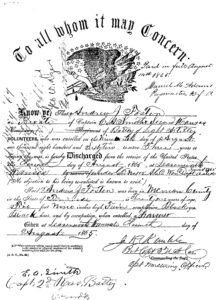

Vvisit the page of the 2nd Kansas Battery for a look at its activities as part of the Army of the Frontier.
According to a story told by my cousin Elton Foster, he had a memory of sitting on his grandfather’s knee and getting a dirty look for kicking, as a little boy might do, at an old army trunk that happened to be close.
Elton also passed to me a recollection of hearing Andrew say he had been at Honey Springs, Newtonie, and some other fracases. Newtonie, turns out to have been the Second Battle of Newtonia, MO where the battery is known to have fought. The story gives you some idea of Andrew’s speaking voice and accent.
ocuments filed with the government as part of a later pension claim provide a narrative about moves after the war.
-After discharge, I returned to my father in Bourbon Co. Kansas… and that same fall I think we moved back to the old location near Preston, Jasper Co. Missouri but found the house burned out. went three miles up the creek – The Big Muddy and lived over a year, when we built on the old place and lived there until 1869 when Father and I moved out to near Coffeyville, Montgomery Co. Kansas.
A.J. Foster in his Pension Case
“-We lived with our father until 1869 and then he and father…went to Kansas leaving me here and I followed them there in 1873. We lived on adjoining farms for over a year. Then he lived on a nearby place another year and then he went to Washington state .
-F.M. Foster in Deposition for A.J. Foster’s Pension Case.
The 1875 Kansas Census shows Andrew with his new wife Hannah. There are no children in the household. Baby Sarah can be found in the household of her grandparents.
On the opposite page is the household of F.M. Foster, showing his wife and child and 79 yearold Jarrett. Dorcas Moseley Foster has now passed.
The 1880 Federal Census reveals massive changes. At the time of the census, the Andrew J. Foster family is in Laramie Wyoming. The section of town they are in is known to have housed migrants, so rather than being permanent residents, they are on their way further west. Hannah Morgan’s parents are neighbours in the migrant neighbourhood so it is the Morgan’s move west Andrew is joining, with father Jarrett having passed in 1878. It must have seemed like time to leave the past behind and move further west.
The family now consists of:
A. Foster 28 Farmer
Anna C. (Hannah C.) 26 Keeping Home
Milfred (Winfred Duke) 5
Vida 3
Oscar C. 1
Infant son 3 months. This is likely Roscoe as on some of his documents, Roscoe claimed birth in Kansas and on others Idaho.
There is no documentary evidence I can find for Andrew J. Foster between Bellvue Idaho where son Thomas Ewell was born in 1882 and the above document from 1883 and the later census document from Olney Washington in 1890.
This 1929 affidavit by Hannah C. Foster, Andrew’s wife does paint part of the story, as does the next entry after it, the letter by Ewell to his son Melvyn, but I have not been able to find evidence of Andrew J. Foster ever living in Oregon, despite Hannah certifying her son Cloyd was born near his father’s farm at Ione Oregon in 1889.
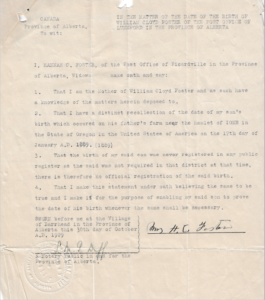

The picture Ewell describes seems to tell only part of the story. Father “went on ahead” to Seattle and North Bend takes on new meaning when we find Andrew in the next couple of entries in Olney, Washington and Fall City Washington evidently on his own and not yet in North Bend where we know the family settled after the death of Hannah Morgan Foster’s parents.
It appears Andrew had an on-again, off-again relationship with his family.
The next several years represent a period in which we can only infer Andrew’s location and situation. We know that son Thomas Ewell was born in Bellvue Idaho. Son Roscoe claimed is birthplace as Boise Idaho in some documents and Kansas in others. However, I lost documentary sight of Andrew himself until this fragment of the 1890 U.S. Census (the full census was destroyed) where he appears on a special schedule of Civil War veterans. The document shows his address as Olney Washington, which is not really included in Ewell’s account above. Nor can I find evidence of Andrew J. Foster living in Oregon at the time of son Cloy’s birth, nor at any time. Still searching.
I have written away to the Snoqualmie Heritage Museum, who found this photo for me, to see if we can confirm the date it was taken. Given the difference in Duke’s apparent age between this picture and the 1897 picture a little further down, I am guessing this is 1893-1894. Will confirm if I know.
At any rate, here are Andrew J. Foster’s kids all attending school in North Bend.
By 1896 it can be proved Andrew was a fixture in the North Bend community. And that the community was aware of Andrew’s attempts to secure more pension. They sent this petition on his behalf.
Also in the same gallery is a collection of Pension related documents including Andrew’s depositions to the Commissioner of Pensions and the depositions of several other witnesses including brother Francis M. Foster and Captain Smith of 2nd Kansas Battery.
The 1900 Census shows the state of the family at the turn of the twentieth century. This will be the last census that finds the family 100% in United States territory.
At the North Bend Precinct we find Andrew J. 58 at the home of his son and daughter in law.
Duke 24 a shingle weaver (knot saw)
Anna 17
Andrew J. 58 a farmer – possibly farming the homestead he was just granted.
Kate Foster 46 is Head of household
Roscoe 20 is a shingle weaver (knot saw)
Thomas E 18 is a shingle weaver (knot saw)
William C. is 11 and at school.
Two boarders are sisters 7 and 2 years old.
Nearby is:
Frank McElroy 28 a gold miner
Vida E. is 22
Leta M. is 4
Walter T is 3.
Over in Snohomish County we find Oscar Foster 21 at a boarding hose. He is a telegraph operator.
At the King County Courthouse on one of our visits, Dale and I found several Proof of Labour records. These seem to have been required for retaining mining claims. The samples I have kept are for 1908 and 1909 but refer to “all the years I have owned it” which illustrates that among other things, Andrew J. Foster was a miner. Perhaps something he began back in Idaho?
Tn 1909 Andrew J. Foster made his first application to the State Soldier’s Home in Orting Washington.
These records and the ones relating to his second application are the first records I uncovered. The man I spoke to at the State Soldiers Home when I drove down there filled out the forms for me. Receiving that package of information really started the obsession.
Ffrom the State Soldiers Home in Orting Washington, we have copies of these cards that show Andrew’s furloughs and that he was eventually over due and dropped. The record covers time between 1916 and 1920.
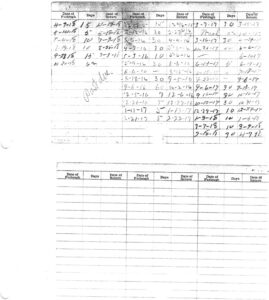

A collection of letters sent by Andrew J. Foster to his son Cloyd between 1915 and 1927. These were kept by D. Margaret Foster, Cloyd’s wife.
I transcribed them to help with more understandable meanings but please do read the originals to undestand the spelling and grammar Great Grandpa Andrew used. He is alternately philosophical, practical, preachy and loving often in a dialog that gives a sense of what his accent would have been like.
These are the records of Andrew’s second stay at the State Soldier’s home. There were fewer furloughs before his death.
One thing noticeable is that whereas in his first stay, he is said to be in the Pickering Barracks. This record says his barracks is the Hospital.
And the card postscript records that he died in a Tacoma hospital December 22, 1928.

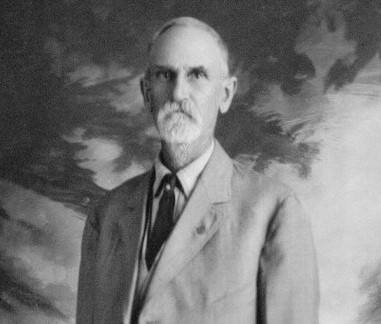
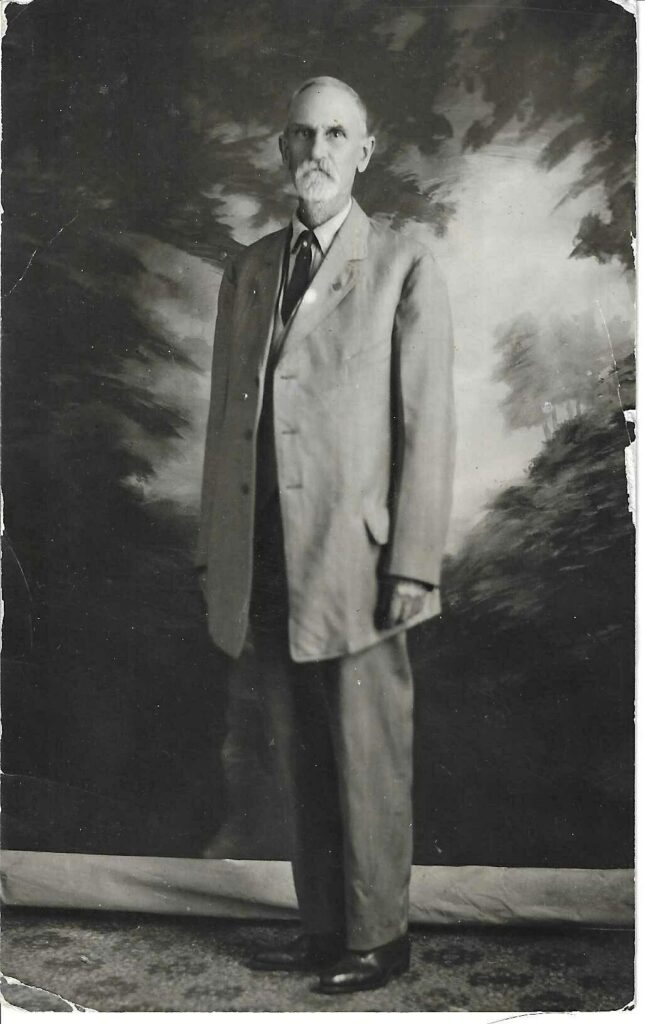
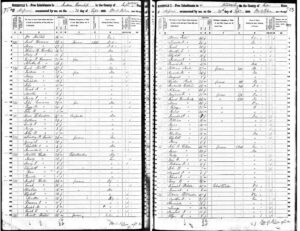
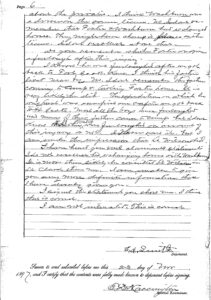
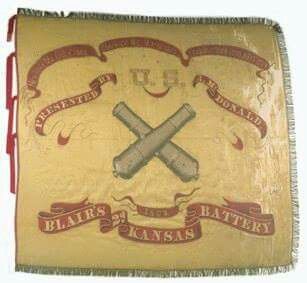
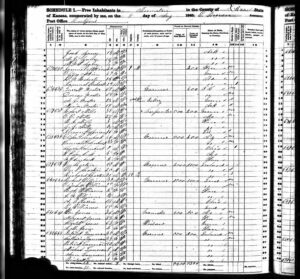
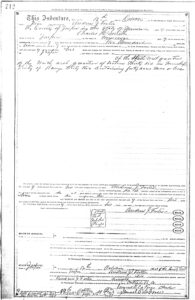
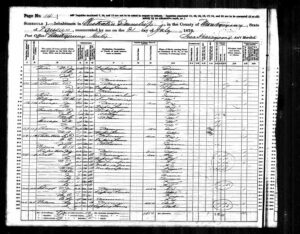
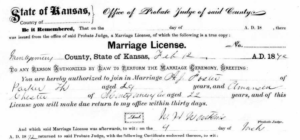
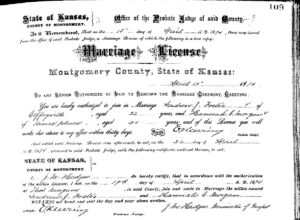
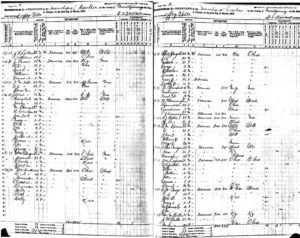
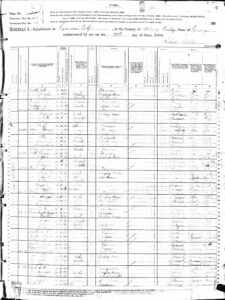
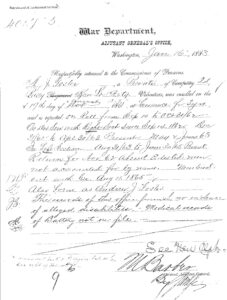
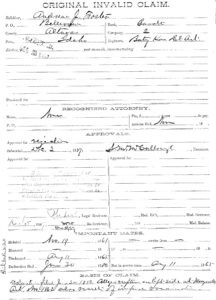
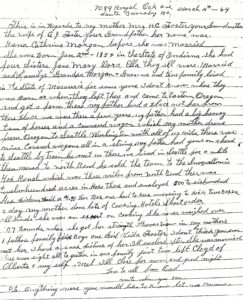

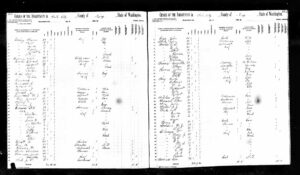
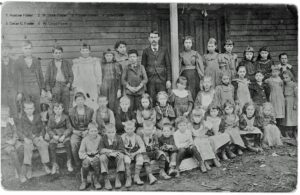
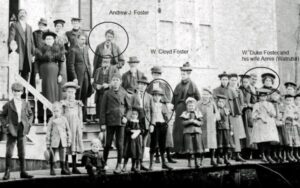
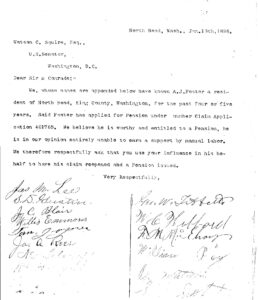
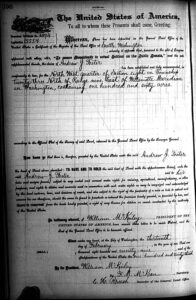
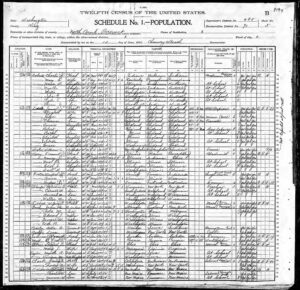
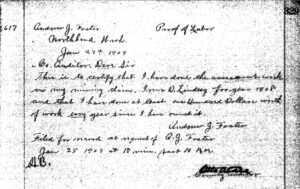
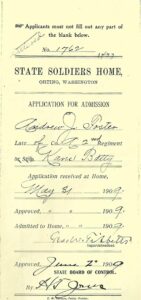
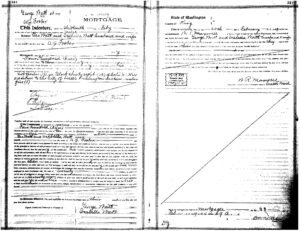
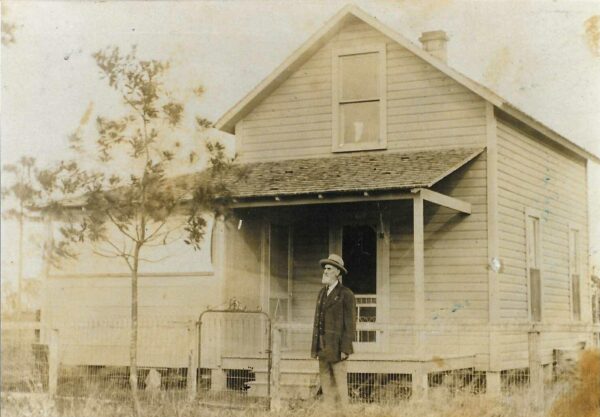
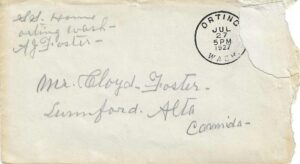
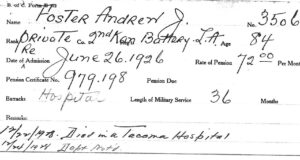
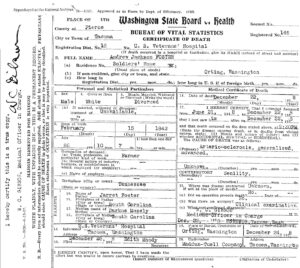
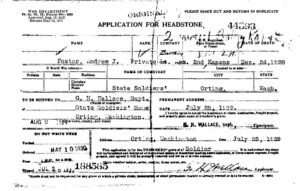
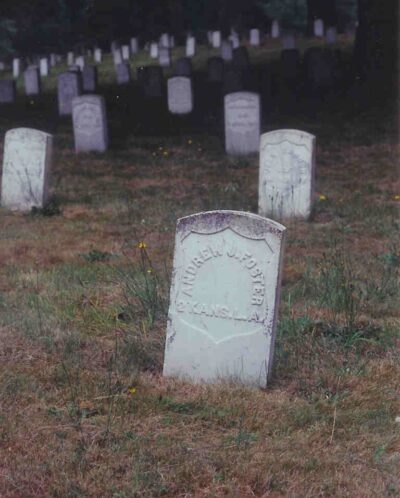
Leave A Comment
You must be logged in to post a comment.